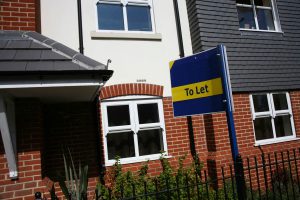A Guide to Fire Safety for Landlords
This means that a fire risk assessment must be carried out (and regularly reviewed) at all properties that are occupied for residential or commercial reasons, as dictated by the Regulatory Reform (Fire Safety) Order. The assessment will identify any hazards that may be present, as well as highlighting ways in which fire can be prevented from starting and spreading in the property. It will also detail escape routes in the event of a blaze.
Potential Risks
In a residential environment, identifying the potential fire risks can be relatively straightforward – as opposed to a commercial environment that might see heavy foot traffic, regularly changing layouts etc.
- Cigarette smoke is an obvious place to start, as smoking remains legal within a private residence. Falling asleep with a lit cigarette or not extinguishing a finished one correctly is responsible for a huge percentage of unintentional fires nationwide, making smoke detectors crucial for giving occupants sufficient warning.
- Kitchens are another place that fires can occur in the home, whether from neglected flames, cooking fats and oils, foods burning within an oven or any other combination of heat, oxygen and ignition.
- Similarly, if equipment designed for ventilation from cooking (e.g. extraction fans) become blocked with excess grease, they can become serious fire hazards.
- Any electrical outlets and equipment supplied by the landlord must have passed a PAT test, as they will be liable should a fire breakout as a result of faulty electrics.
- In order to best facilitate escape in a blaze, all doors leading to the exterior of the building should be unlockable from the inside without the need for a key.

Responsibilities
A number of separate pieces of legislation apply when it comes to determining the responsibilities that a landlord has to their tenants in respect to fire safety. These include all or part of the following:
- Housing Health & Safety Rating System
- The Smoke and Carbon Monoxide Alarm (England) Regulations, 2015
- The Regulatory Reform (Fire Safety Order) 2005
- Management Regulations
- Licensing Condition
- Building Regulations (if building works are taking place)
A few points to pay close attention to in relation to these regulations:
- There must be a minimum of one smoke alarm installed on every floor of a property (as of The Smoke and Carbon Monoxide Alarm (England) Regulations, which came into effect 1st October 2015). It is the landlord’s responsibility to ensure that the alarms remain in working order before any new tenants move in.
- Further, a carbon monoxide detector must be present in any room in which solid fuels are burned, such as from a coal fire.
- Though it (and more) should be detailed in any fire risk assessment (a requirement of the Regulatory Reform Fire Safety Order), it is a very minimum requirement that landlords provide tenants with a ‘means of escape’ in the event of a fire.
Failure to meet responsibilities towards fire safety could result in withheld rent and legal action.
Request a Callback
Just fill in your details below and we'll get back to you as soon as we can!

About Scutum London
Scutum London is a leading expert in fire safety and security solutions for businesses and organisations located across South East England, including London and Surrey.
From fire alarms, fire extinguishers and fire risk assessments to access control, CCTV and intruder alarm systems – and a lot more besides – we offer a comprehensive range of products and services designed to keep you, your business and your staff and visitors safe.
With decades of industry experience to call on, we’re proud to hold accreditations from leading trade associations and bodies such as British Approvals for Fire Equipment (BAFE), the British Fire Consortium, the Fire Industry Association (FIA) and Security Systems and Alarms Inspection Board (SSAIB).
If you’d like to find out more about Scutum London, get in touch with our friendly team or explore our products and services on our site.

